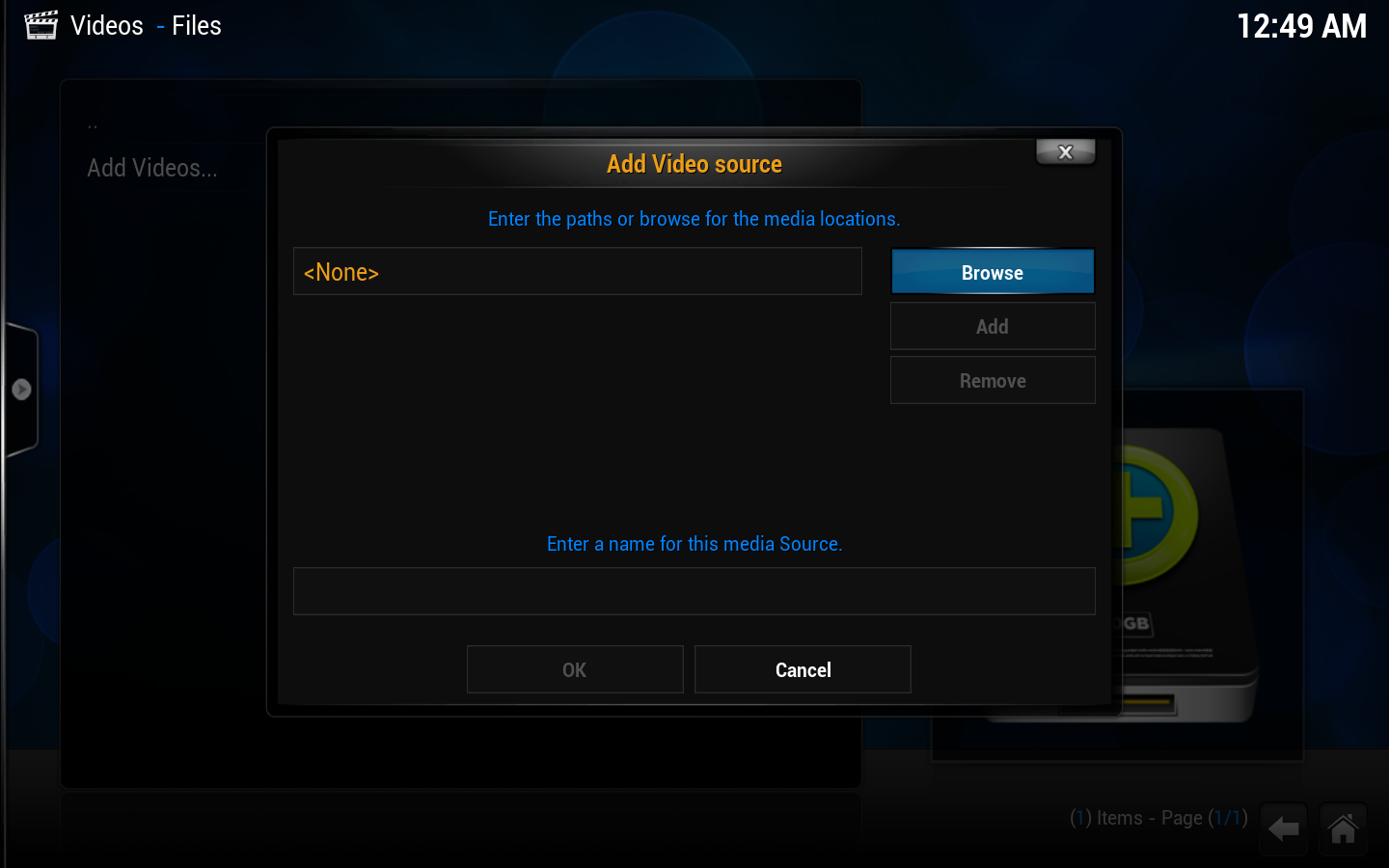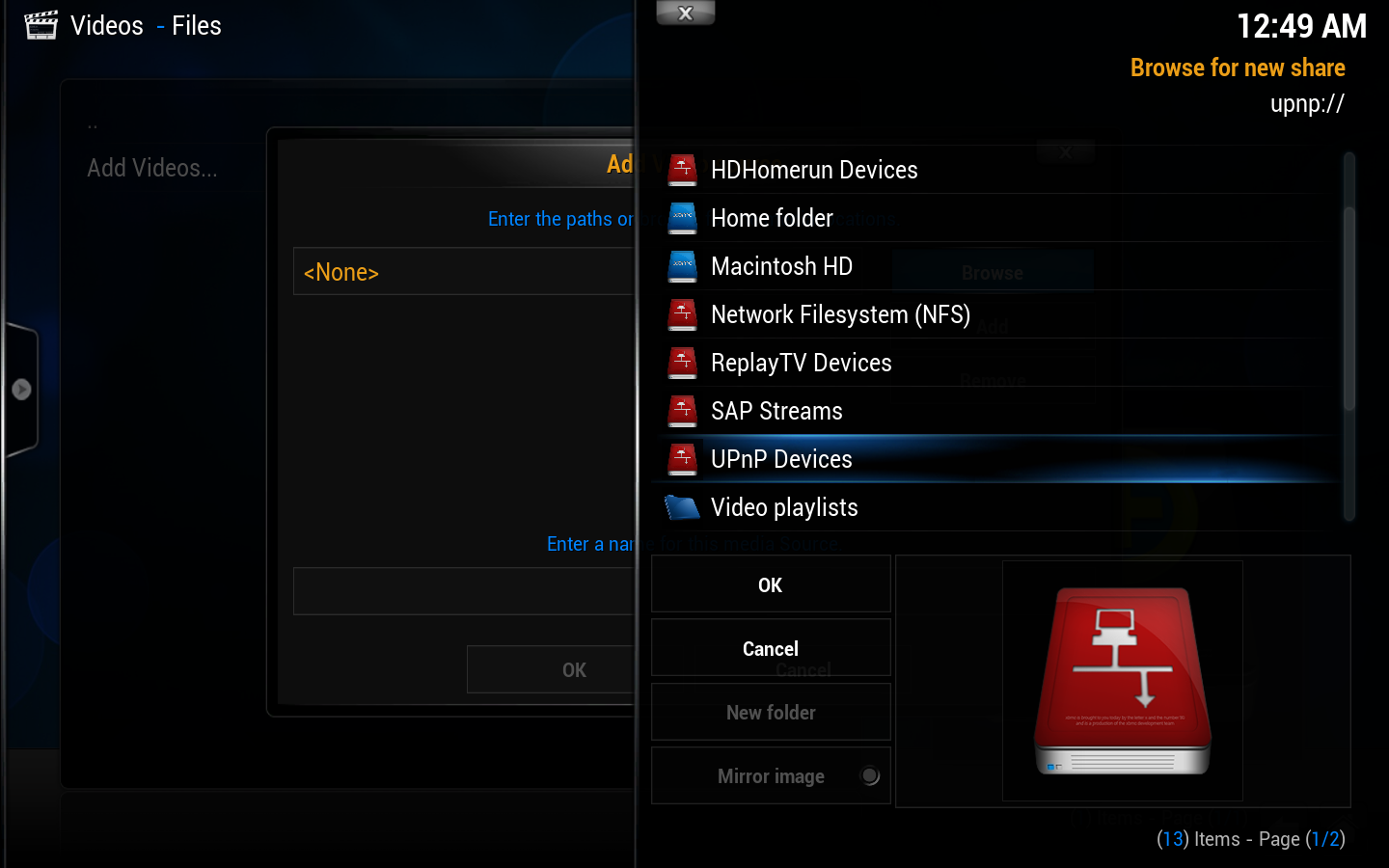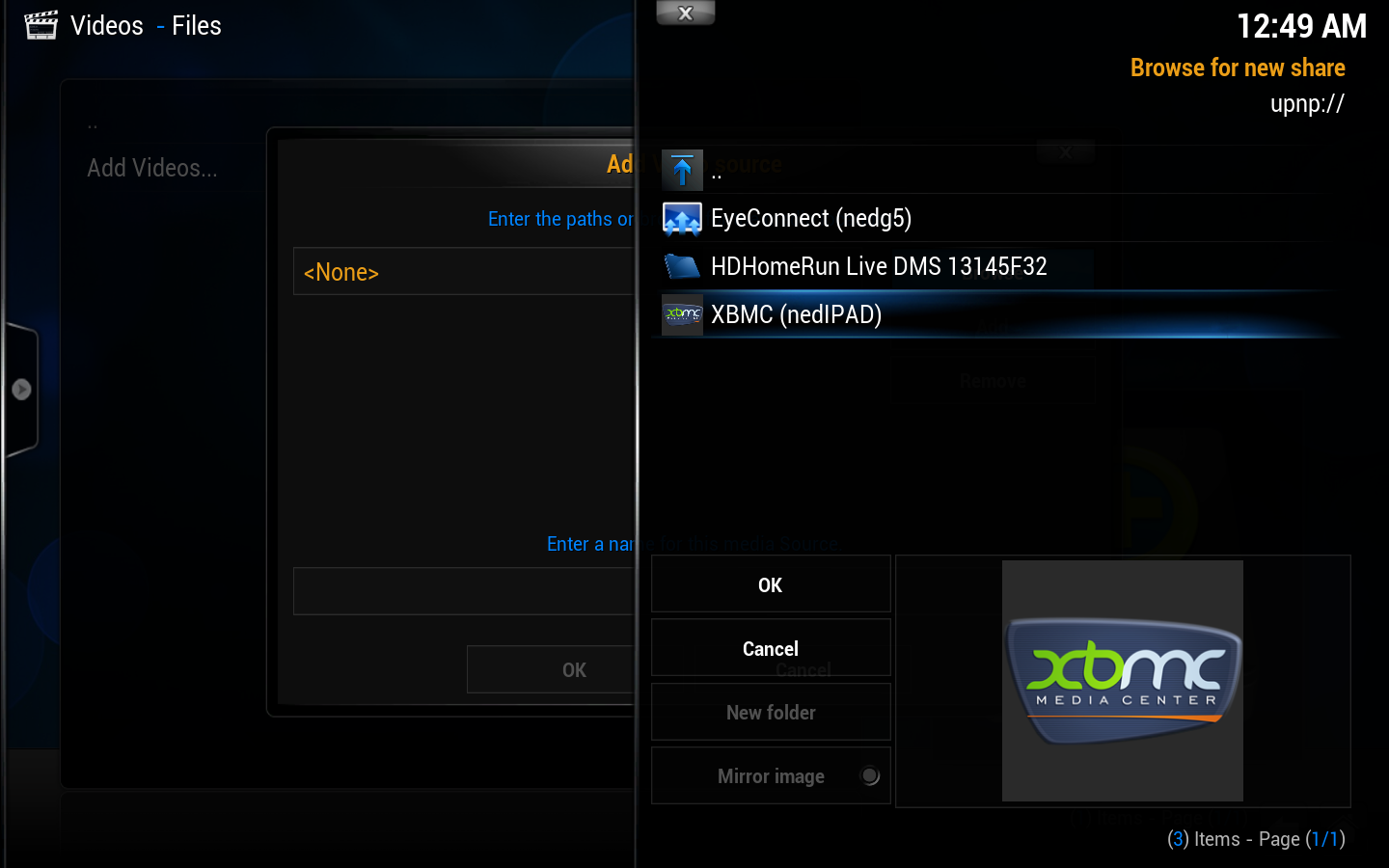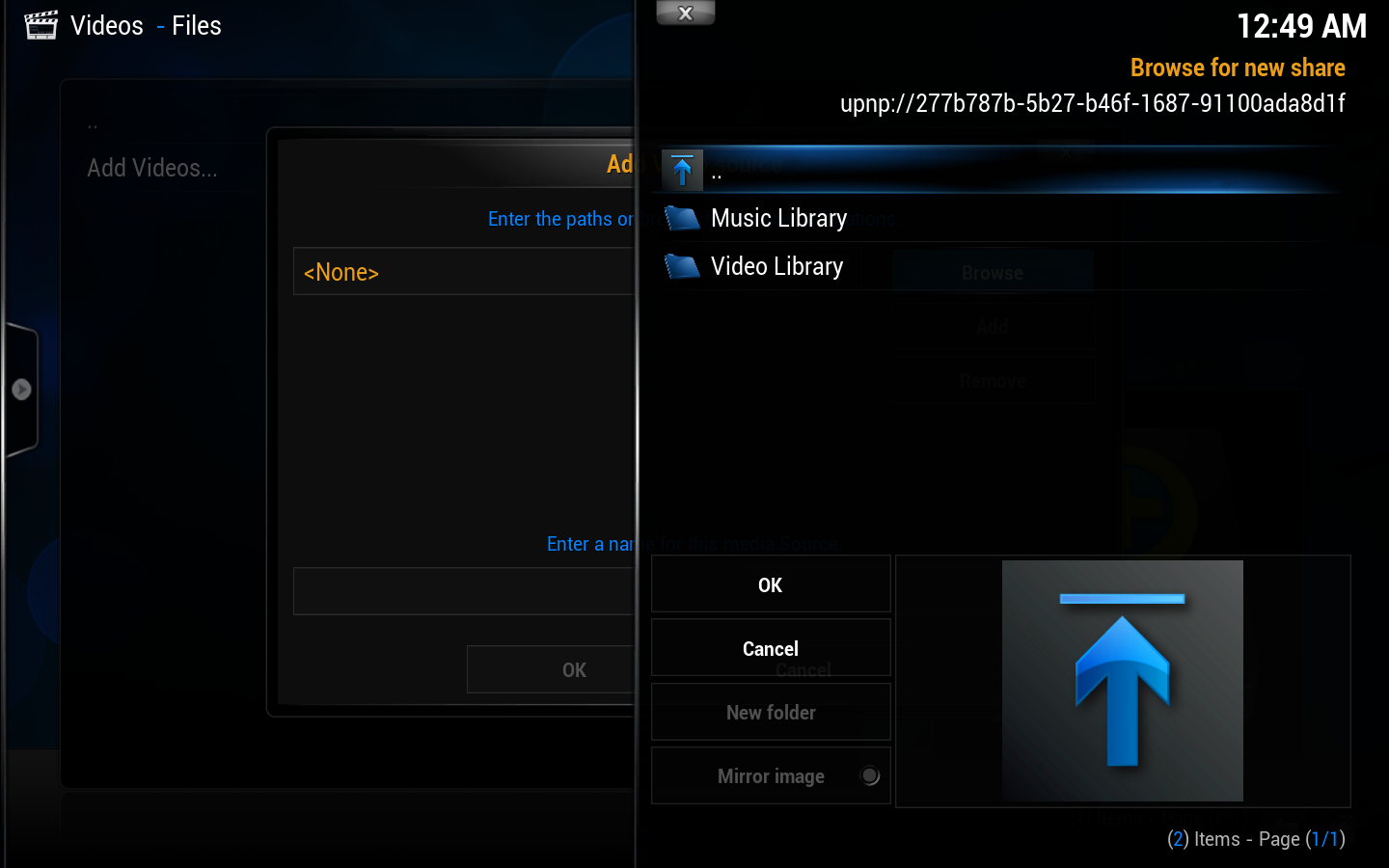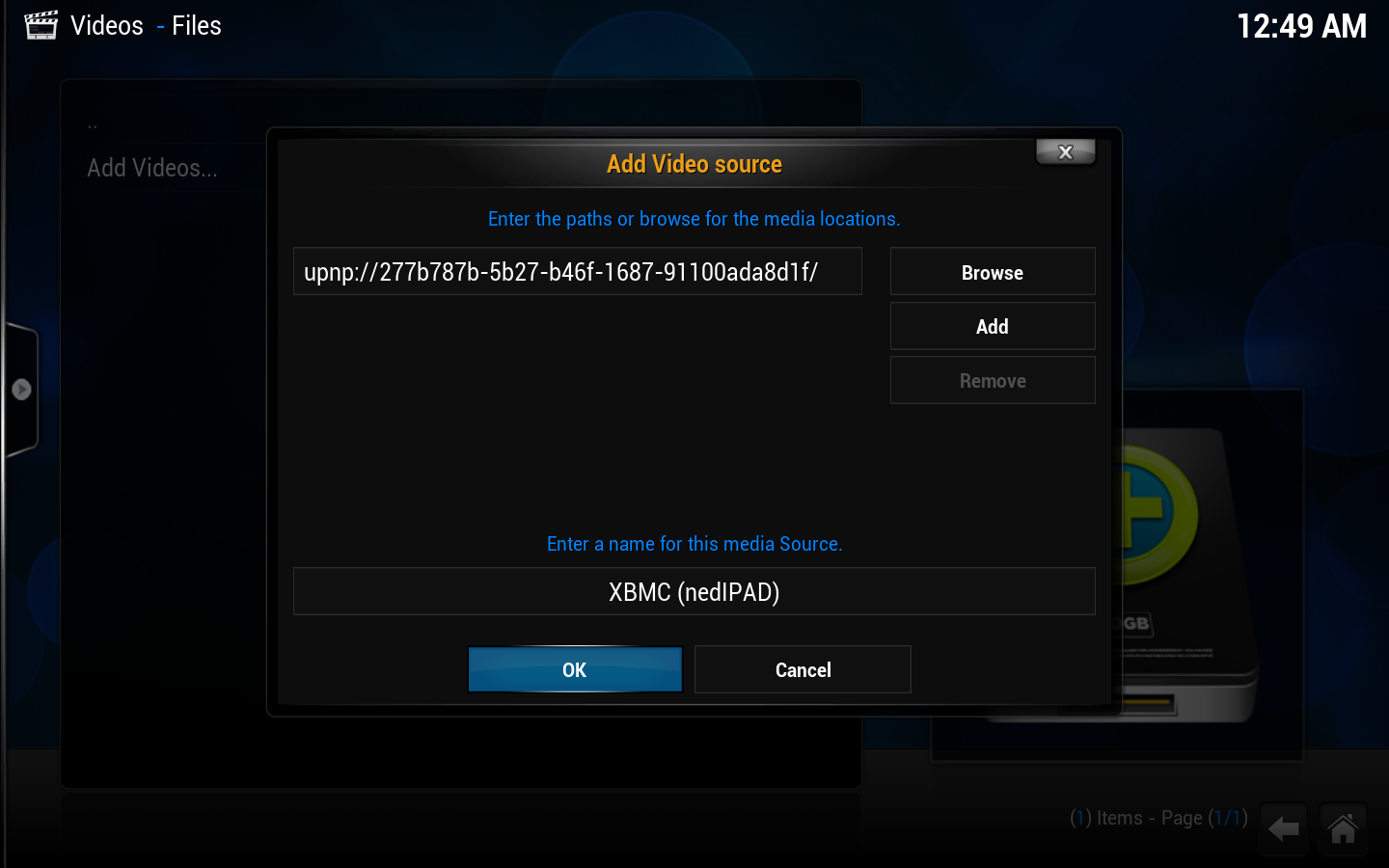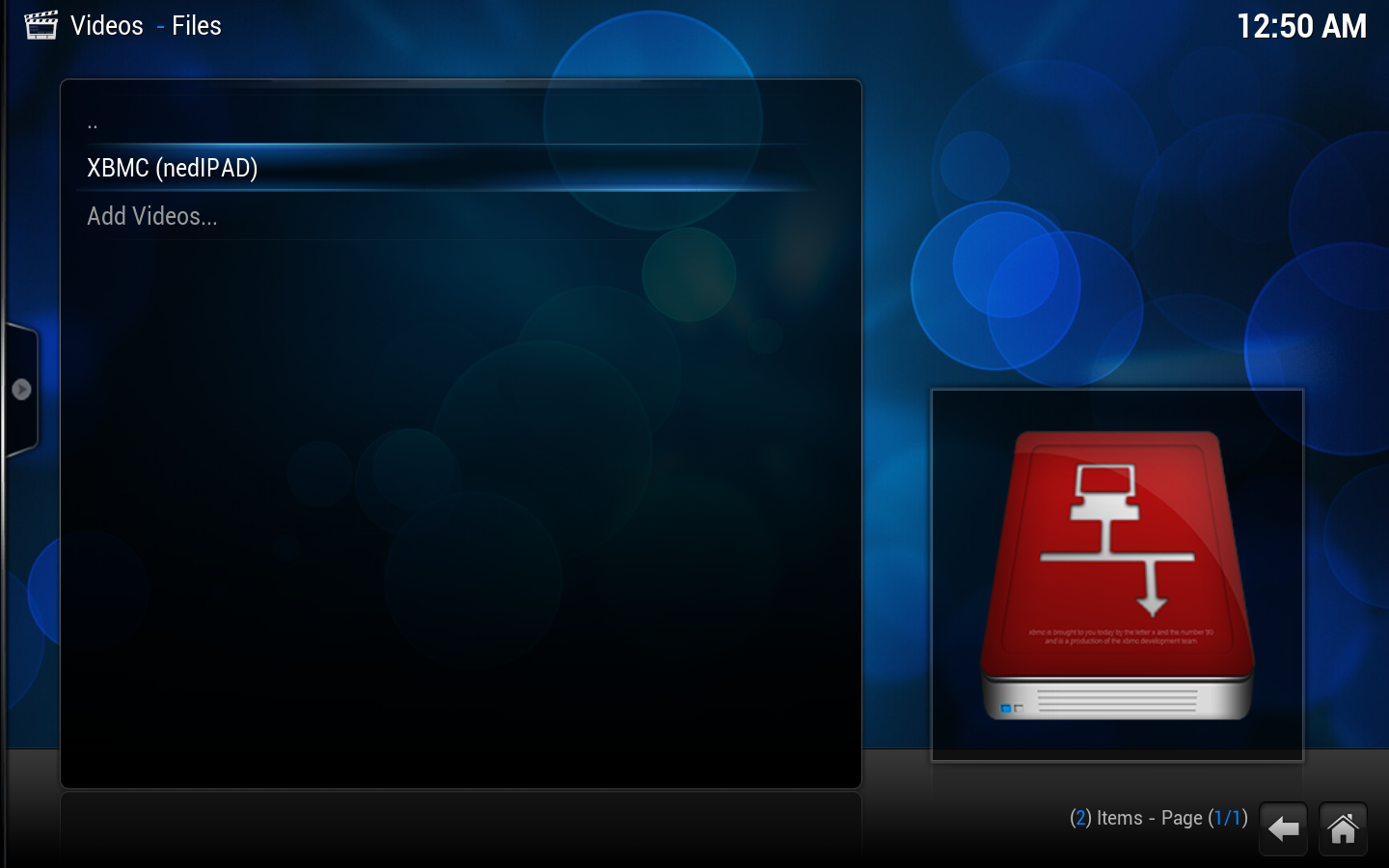Archive:UPnP/Media source: Difference between revisions
Jump to navigation
Jump to search
No edit summary |
No edit summary |
||
| Line 1: | Line 1: | ||
{{mininav|[[General topics]]|[[Videos]]|[[Video playback|Playback]] | {{mininav|[[General topics]]|[[Videos]]|[[Video playback|Playback]]|[[UPnP]]}} | ||
{{see also|UPnP/Server|HOW-TO:Share libraries using UPnP}} | {{see also|UPnP/Server|HOW-TO:Share libraries using UPnP}} | ||
XBMC can use UPnP as a [[media sources]] from any device that has a UPnP server. UPnP media servers are available for most operating systems and many hardware platforms. XBMC itself can be a [[UPnP server]]. | XBMC can use UPnP as a [[media sources]] from any device that has a UPnP server. UPnP media servers are available for most operating systems and many hardware platforms. XBMC itself can be a [[UPnP server]]. | ||
Revision as of 09:43, 12 June 2013
See also: UPnP/Server and HOW-TO:Share libraries using UPnP
XBMC can use UPnP as a media sources from any device that has a UPnP server. UPnP media servers are available for most operating systems and many hardware platforms. XBMC itself can be a UPnP server.
Currently, due to technical limitations (dynamic file paths) UPnP file sources can't be scanned into the local library. However, since many UPnP servers can provide metadata as well as the files themselves, then this may not be an issue.
Setting up UPnP file sources in XBMC
UPnP file sources can be used in videos, music, and pictures. Configuring UPnP file sources in XBMC is as easy as setting up any other type of file source, such as SMB or NFS.
